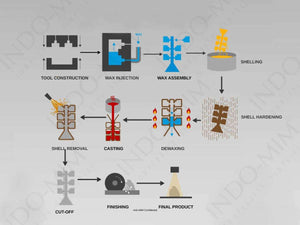To produce many specific metal components, the metal undergoes certain processes to achieve the shape and quality. For products like investment castings components, it needs to undergo a rigorous process called machining. This process is very complicated and crucial to the quality of the metalwork. You also need to remember that there are various tools and techniques within machining specific to the component and its purpose.
Depending on what the investment casting component will ultimately be used for, the rigid and complex process it undergoes may still vary. To find out more about how the investment casting process works, below are the applications and types used.
Machined Investment Casting Applications
Investment castings are essentially used in power generation and aerospace industries to produce a variety of components. The process in investment casting includes the operation of machining the metal after it has been manufactured. This is to have it made and delivered to the company’s exact specifications. In the power generation and aerospace industries, it is imperative to guarantee that any accurate measurement is achieved in machined investment casting.
Types of Machining
The tools, techniques, and technology involved in machining vary between different tools used for cutting. There are times where machined investment casting needs a specific texture or an exact measurement. Likewise, in each case, an additional device is utilized. A few of the different machining operations types include turning, drilling, boring, reaming, and milling.
A single edge cutting tool is used to eliminate excess material from a rotating component to produce a cylindrical shape when it comes to the turning process. As for the drilling process, a round hole is being created. A single bent tip is used to advance the precision of an already roughly made hole.
The reaming process involves the removal of a small amount of excess metal from an already drilled hole. Lastly, milling is a rotating tool with several cutting edges utilized to create a straight surface.

How the Investment Casting Process Works
March 23, 2021
Newer Post
